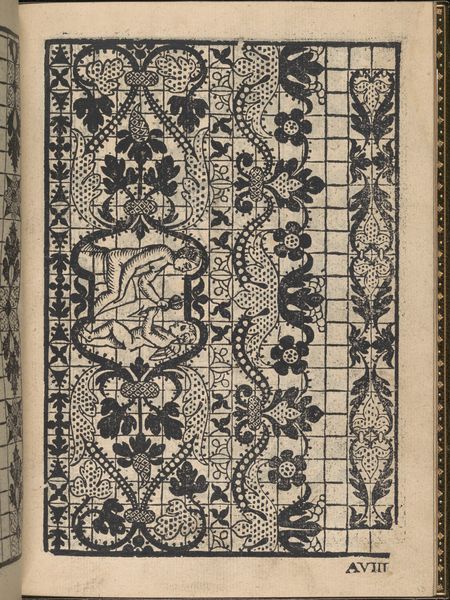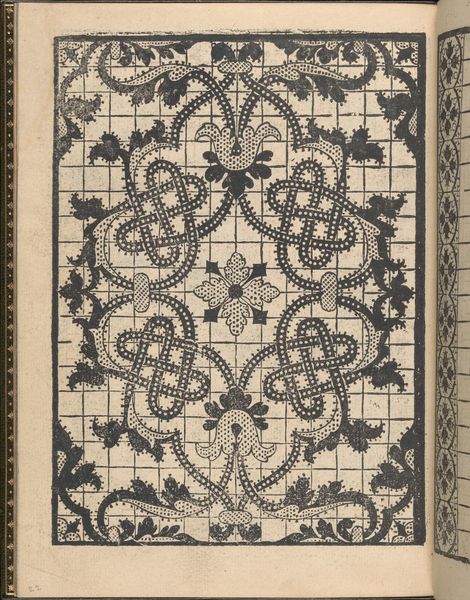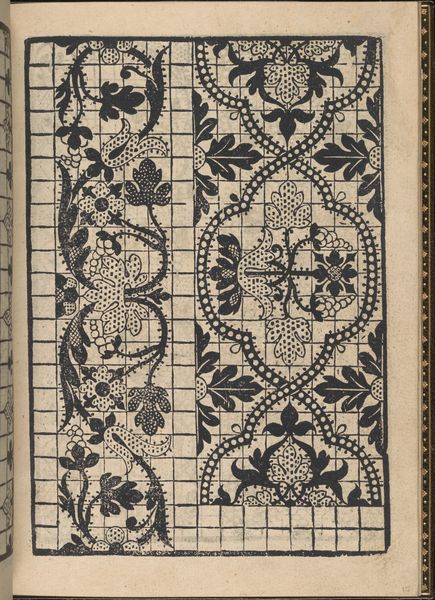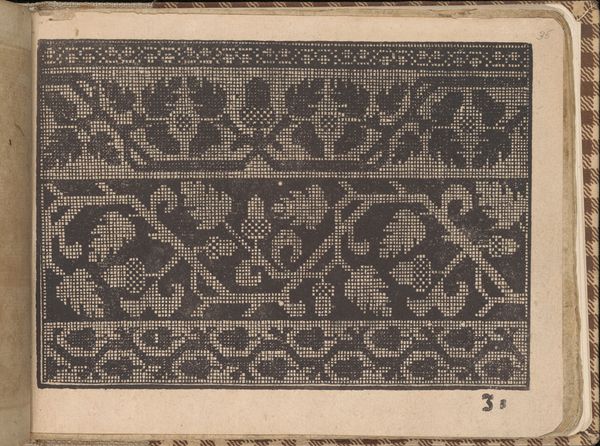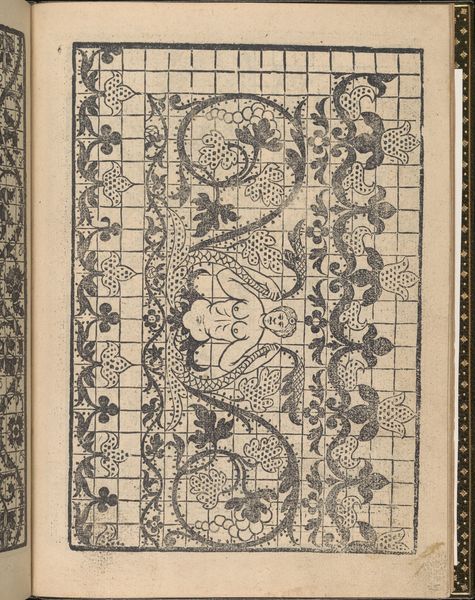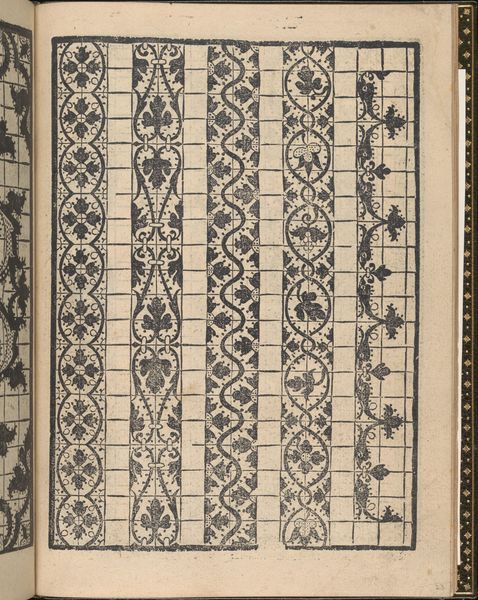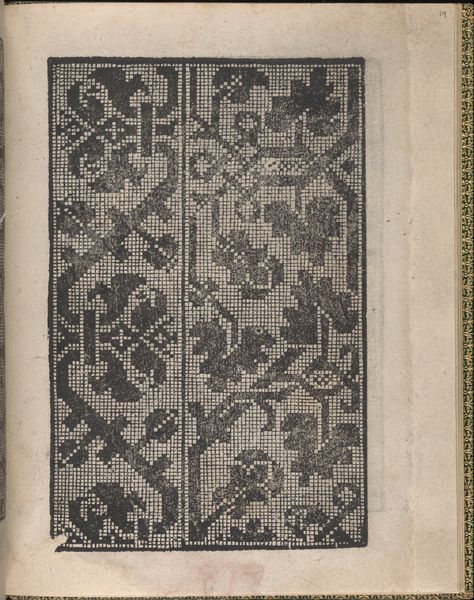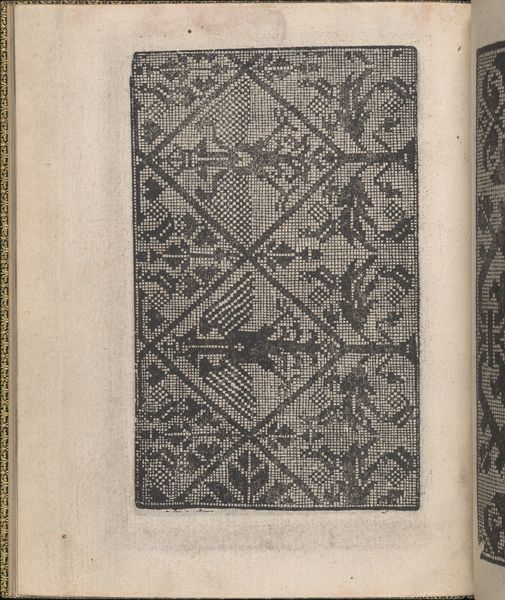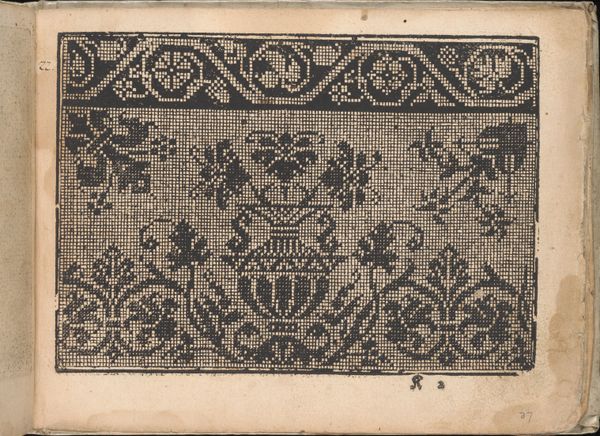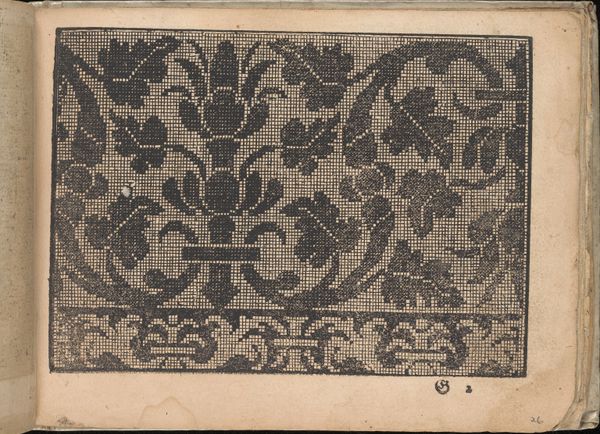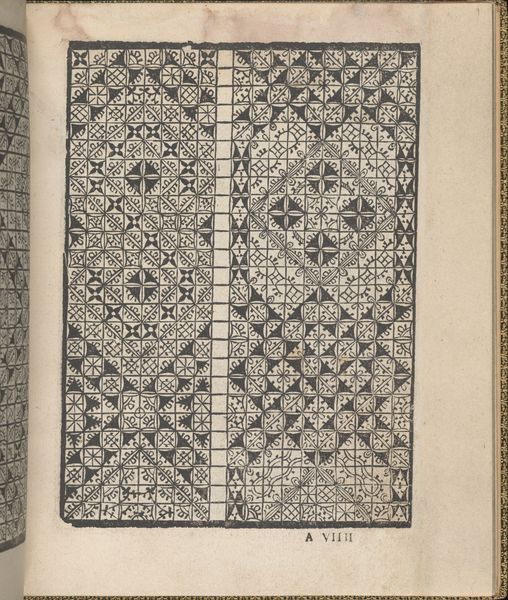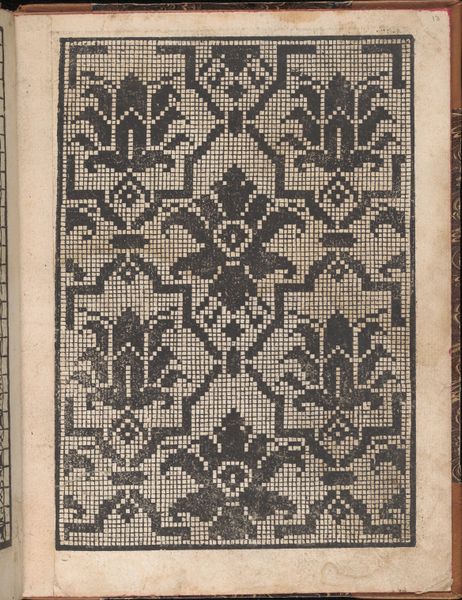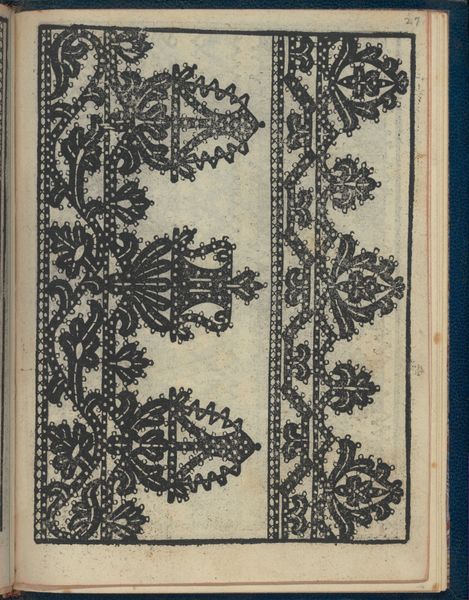
La Gloria et l'Honore di Ponti Tagliati, E Ponti in Aere, page 7 (recto) 1556
0:00
0:00
drawing, print, intaglio, paper, engraving
#
drawing
# print
#
book
#
intaglio
#
pattern
#
paper
#
11_renaissance
#
geometric
#
engraving
Dimensions: Overall: 8 1/4 x 6 1/8 in. (21 x 15.5 cm)
Copyright: Public Domain
This is a woodcut from a book by Matteo Pagano, an Italian artist who died in 1588. The page presents a design for needle lace set out on a grid. The repeating floral pattern testifies to the status of lace as luxury fabric in sixteenth-century Europe. It was expensive to produce, and fashionable garments were trimmed with it. Books like this one helped to codify the skills involved in making it, but also served as pattern books for more humble artisans to copy. The title of Pagano’s book promises ‘glory and honour’ to those who practice the craft. Note that the book is located today in the Metropolitan Museum of Art. This shows how domestic crafts like lace-making could, over time, enter into the institutional history of ‘art’ with a capital A. As art historians, we can look at museum collection catalogues, auction records, and costume books to learn more about the social meanings of lace in the Renaissance. We can examine the rise of fashion as an economic and cultural phenomenon.
Comments
No comments
Be the first to comment and join the conversation on the ultimate creative platform.
